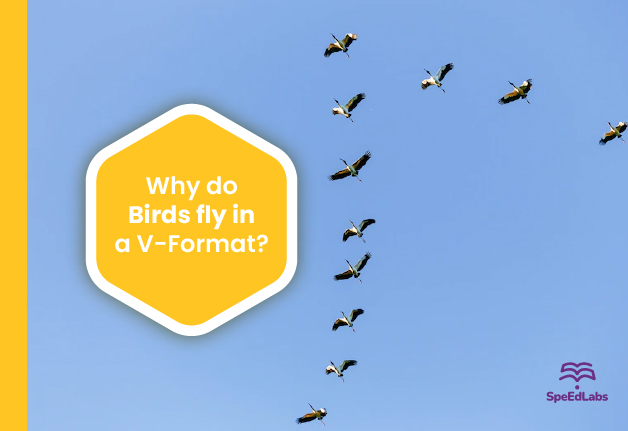Looking up at the sky, have you ever noticed birds flying in a V format over your head? Did you ever wonder why birds fly like that? A majority of people believe that this is a group of birds following a leader. It’s a lot more complicated and interesting to observe a flock of birds flying in a V shape than people usually think.
There are several reasons why birds fly in a perfect ‘V’ pattern. Birds use flying as a mode of locomotion to migrate, breed, feed and avoid predators. There are many forms of locomotion in the animal kingdom, but flying is considered one of the most complex ones. During flight, this formation of the ‘V’ shape is a unique bird behaviour that has been studied in ornithology for decades.
How do Birds Decide the Leader of their Flock?
During the flight, each bird has an equal share of responsibility for forming the V. As a result, birds are kept stress-free as well as receive other benefits. When the leader becomes tired, it goes back and another bird from the flock takes its place. Throughout the migration process, this continues. In this case, cooperation is evident in action. Each bird is given the chance to lead the flock before sliding back to relax its wings, thus reducing its energy expenditure. The healthier birds usually lead in V formation first, followed by others.
The Mechanics of Bird Flight: How do they fly?
To understand why birds fly in a V format, we must understand the science behind it. The mechanism of bird flight is similar to that of aircraft. There is a balance between lift and drag in both cases that is determined by aerodynamic forces. A lift is a force produced by airflow in a wing, whereas a drag is a force opposite the direction of motion. Birds can fly because of these two forces combined.
Why do Birds Fly in a V-Format? – Know the Reasons
V-Formation is used not only by birds but also by military personnel during wartime. Since Spartans used the V-Formation in the Middle Ages until today’s fighter jets and sea warfare, the V-Formation has been used in several wars. People, birds, and planes all follow this formation for similar reasons. When you line up in a V-formation, you can see ahead of you. Nonetheless, a flock of birds flying in a V shape has more impressive reasons behind this flight pattern:
- Flying long distances becomes easier with V formation. V formation allows birds to synchronise wing beats. There is an observation that the birds in the back have lower heartbeat rates than the birds in the front. Birds that flap their wings cause the wind to be pushed downwards, which is known as downwash. As a result, the wings are easily able to move in an upward direction (from the high-pressure region to the low-pressure region). It is called the upwash. Birds behind benefit from this upwash as it reduces their energy expenditure.
- During a study conducted by Henri Weimerskirch in 2001, he fitted heart rate monitors to pelicans and found that birds flying at the back of the V had lower heart rates and flapped less often than those flying at the front flap. As a result, the stronger birds tend to lead the flock. When flying in a V formation, they use less energy than if they flew individually, which keeps them healthier. The birds are less stressed.
Flying in a V-position has other benefits. During the flight, all birds in the group fly within the field of vision of each other. In this way, everyone in the group can keep track of one another. It also makes it easy for the group members to communicate with one another while flying.
When a bird becomes sick or is injured, such as being shot, it will fall out of formation. This will cause two other birds to separate and offer protection and help to the injured bird until it recovers or dies, after which they will rejoin the others.
Additionally, military jets also fly in this V formation for the same reason. During the flight, each fighter pilot can speak with each other, communicate with each other, and assist each other.
Also published on Medium.
